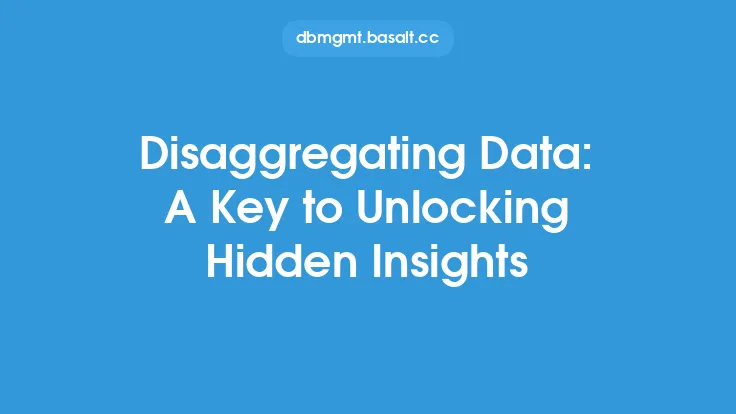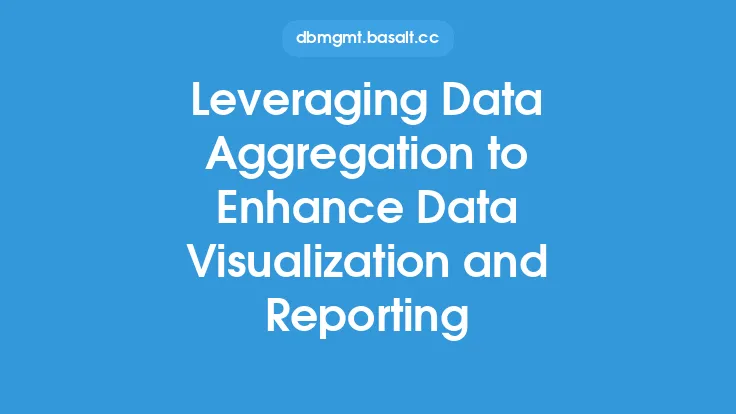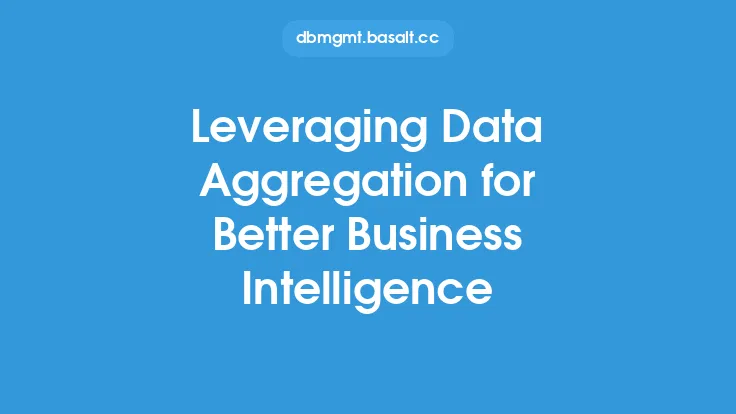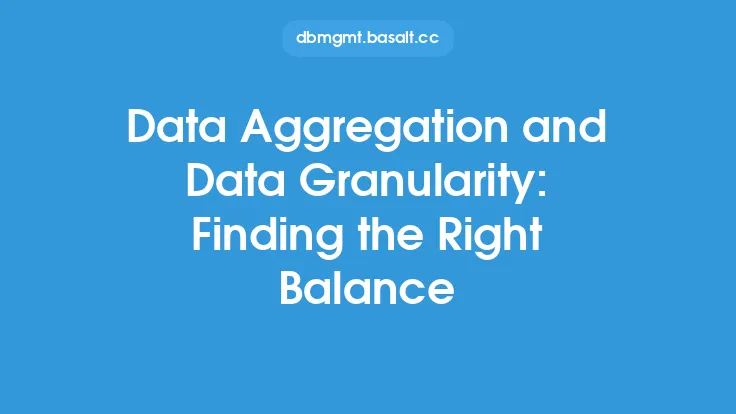Data aggregation and data mining are two interconnected concepts that play a crucial role in unlocking hidden insights from large datasets. Data aggregation refers to the process of gathering and combining data from multiple sources into a single, unified view, while data mining involves the use of sophisticated algorithms and statistical techniques to identify patterns, relationships, and trends within the aggregated data. By combining these two processes, organizations can gain a deeper understanding of their data, make more informed decisions, and drive business success.
Introduction to Data Aggregation
Data aggregation is the process of collecting and combining data from multiple sources, such as databases, spreadsheets, or external data providers, into a single, unified view. This process involves transforming and formatting the data into a consistent structure, allowing for easier analysis and reporting. Data aggregation can be performed using various techniques, including rollup, cube, and grouping sets, each with its own strengths and weaknesses. The goal of data aggregation is to provide a comprehensive and accurate view of the data, enabling organizations to make informed decisions and drive business success.
Data Mining Techniques
Data mining involves the use of sophisticated algorithms and statistical techniques to identify patterns, relationships, and trends within the aggregated data. Some common data mining techniques include decision trees, clustering, regression analysis, and neural networks. These techniques can be used to identify correlations between different variables, predict future trends and behaviors, and identify areas for improvement. Data mining can be performed using various tools and software, including SQL, Python, and R, each with its own strengths and weaknesses. The goal of data mining is to extract valuable insights and knowledge from the aggregated data, enabling organizations to make data-driven decisions and drive business success.
Benefits of Data Aggregation and Data Mining
The benefits of data aggregation and data mining are numerous and well-documented. By combining these two processes, organizations can gain a deeper understanding of their data, make more informed decisions, and drive business success. Some of the key benefits include improved data analysis and reporting, enhanced data visualization, and increased business intelligence. Data aggregation and data mining can also help organizations to identify areas for improvement, optimize business processes, and reduce costs. Additionally, these processes can help organizations to gain a competitive advantage, improve customer satisfaction, and drive revenue growth.
Data Aggregation and Data Mining Tools
There are various tools and software available for data aggregation and data mining, each with its own strengths and weaknesses. Some popular tools include SQL, Python, and R, which are widely used for data aggregation and data mining tasks. Other tools, such as Tableau, Power BI, and QlikView, are specifically designed for data visualization and business intelligence. These tools can help organizations to aggregate and analyze their data, identify patterns and trends, and make data-driven decisions. When choosing a data aggregation and data mining tool, organizations should consider factors such as scalability, flexibility, and ease of use.
Best Practices for Data Aggregation and Data Mining
To get the most out of data aggregation and data mining, organizations should follow best practices for data management and analysis. Some key best practices include ensuring data quality and integrity, using standardized data formats, and documenting data sources and methodologies. Organizations should also ensure that their data aggregation and data mining processes are scalable, flexible, and secure, and that they comply with relevant laws and regulations. Additionally, organizations should consider using data governance frameworks and data quality metrics to ensure that their data is accurate, complete, and consistent.
Common Challenges and Limitations
Despite the many benefits of data aggregation and data mining, there are also common challenges and limitations that organizations may face. Some of the key challenges include ensuring data quality and integrity, managing large and complex datasets, and dealing with data privacy and security concerns. Organizations may also face challenges in terms of scalability, flexibility, and cost, particularly when working with large and distributed datasets. To overcome these challenges, organizations should consider using advanced data management and analysis techniques, such as data warehousing, big data analytics, and cloud computing.
Future Directions and Trends
The field of data aggregation and data mining is constantly evolving, with new technologies and techniques emerging all the time. Some of the key future directions and trends include the use of artificial intelligence and machine learning, the adoption of cloud-based data management and analysis platforms, and the increasing importance of data governance and data quality. Organizations should stay up-to-date with the latest developments and trends in data aggregation and data mining, and consider how they can apply these technologies and techniques to drive business success.
Conclusion
In conclusion, data aggregation and data mining are two interconnected concepts that play a crucial role in unlocking hidden insights from large datasets. By combining these two processes, organizations can gain a deeper understanding of their data, make more informed decisions, and drive business success. While there are challenges and limitations to data aggregation and data mining, the benefits are numerous and well-documented. As the field continues to evolve, organizations should stay up-to-date with the latest developments and trends, and consider how they can apply these technologies and techniques to drive business success.





